The Effects of SO2 Dosing after Fermentation on Chemistry, Aging, and Sensory Characteristics of Virginia Cabernet Sauvignon (2019)
Kirsty Harmon
Blenheim Vineyards
Summary
Sulfur dioxide is a traditional, inexpensive additive used widely at many different stages of modern wine making to combat oxidation and microbial spoilage. Despite all that is known about the chemistry and interactions of SO2 in wine, many practical questions remain for winemakers. Building on the findings of an experiment conducted in 2018, the work reported here seeks to explore the effect of a high (75ppm) vs. very high (100 ppm) dose of SO2 at the end of malolactic fermentation. Addition of 100 mg/L SO2 allowed wine to age above a target of 0.5 mg/L without additional dosing during aging while 75 mg/L did not. Wines treated with the very high rate were given significantly higher scores for aromatic intensity and nearly significantly higher scores for fruit intensity and overall wine quality.
Introduction
Sulfur dioxide is a traditional, inexpensive additive used widely at many different stages of modern wine making to combat oxidation and microbial spoilage. It can be used pre-fermentation to control microbial populations that come in on grapes and oxidation of juice, post-fermentation to protect wine from oxidation and spoilage during aging, for storage of barrels to prevent microbial spoilage, and even as a general cleaning agent in the winery. Despite its widespread use, many questions of everyday practical use remain.
SO2 is most often used in the winery in a liquid form. When SO2 dissolves in water, it doesn’t remain only as SO2. Instead, it interacts with the water in a way that takes three forms: molecular sulfur, bisulfite and sulfite (Figure 1). How much of any one form is present depends on the pH of the solution. Molecular sulfur is the only form with antimicrobial properties, while the bisulfite form conveys anti-enzymatic and anti-oxidant properties1–3. Unfortunately, bisulfite acts by binding to target molecules (such as the enzymes that cause browning), and when bound, they are no longer active in the wine. When determining how much SO2 to add, it is important to keep in mind that some of the added SO2 will be bound up by components of the wine. Estimates of SO2 binding are that 30-50% of the SO2 addition to finished wine will be bound up within the first few days of addition in an aging wine, while up to 70% of the initial dose of SO2 after completion of fermentation will be bound1,2,4.
Figure 1: Forms of sulfur dioxide in solution are pH dependent. Image from Rotter n.d5.
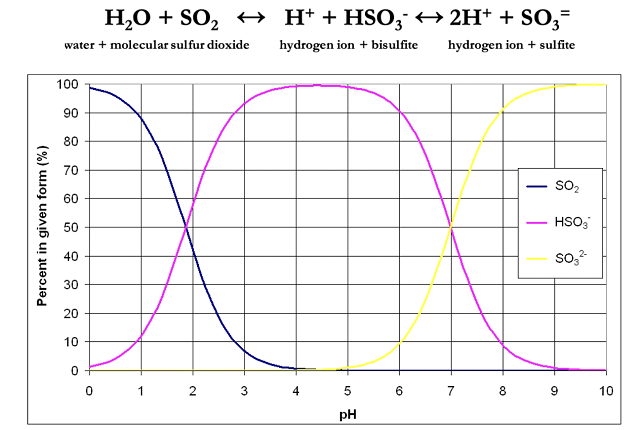
The decision of how much SO2 to add to a wine is a good demonstration of the goldilocks principle: one wants to add just enough but not too much. SO2 had many positive effects on sensory perception of wine. Judicious use can:
- preserve the freshness and fruit character of the wine by protecting it from oxidation4
- reverse the nutty, oxidative character of wines caused by acetaldehyde4
- increase the extraction of color in red wines6,7
- prevent browning of white and red wines during aging3,6,7
- help prevent microbial spoilage that leads to ethyl acetate and acetic acid4
- prevent malolactic fermentation in crisp white wines4
However, SO2 also has negative sensory effects including:
- loss of color due to anthocyanin bleaching5,8
- reduced rate of tannin polymerization and thus maturation in red wines6
- neutralization of other odors of the wine1
- negative odors of its own such as a metallic, harsh pungent aroma8, wet wool or burning characteristic1
Despite all that is known about the chemistry and interactions of SO2 in wine, many practical questions remain for winemakers. In a WRE experiment in 2018, Kirsty Harmon from Blenheim vineyards divided her Cabernet Franc into six treatment regimes with varying barrel age (new and neutral), dose (30mg/L vs. 70 mg/L) and timing of SO2 addition (immediately after the end of malolactic fermentation vs. 14 days later). The free and total SO2, SO2 addition rates, volatile acidity and microbiological evolution were reported. The experiment found that the high initial dose led to higher total sulfur in each case. However, wines treated with the high initial dose were also closer to the target SO2 rate for aging for a higher proportion of the aging period. High initial dose may have helped preserve anthocyanins and had lower overall accumulation of acetic acid during aging. New barrels had lower free SO2, accumulated higher amounts of acetic acid, and had high microbial populations of Pediococcus and acetic acid bacteria than their neutral counterparts on the same SO2schedule. If using new barrels, care should be taken to monitor SO2 levels early in aging to accommodate for additional SO2 binding by new barrels vs. older barrels.
The 2018 experiment also found that delaying SO2 addition by two weeks decreased the total sulfur levels at both dose levels. Wines with delayed SO2 addition began aging with higher acetic acid but experienced very little acetic acid accumulation during aging. The high, delayed dose was closest to the target SO2 during aging. Though these wines were distinguishable from one another during sensory analysis, there was no significant preference for one wine over the other and no consistent trends in the differences (color, astringency, fruit or aromatic intensity).
To build on the findings of the 2018 experiment, the work reported here seeks to explore the effect of a high (75ppm) vs. very high (100 ppm) dose of SO2. In 2018, an initial SO2 addition of 70 mg/L allowed wine to age closer to the target molecular SO2 but did not achieve this target. Here, wine treated with an initial addition of 77 mg/L was compared to wine treated with an initial addition of 100 mg/L.
Methods
There were two lots of Cabernet Sauvignon used in this experiment. For each, wine was vinified as a single lot until the completion of malolactic fermentation, after which individual barrels from the lot received different doses of SO2.
Cabernet Sauvignon was made according to the winery’s standard protocol. Grapes were hand harvested, chilled overnight, sorted, destemmed and loaded into TBins with the addition of 50 mg/L SO2 (as a KMBS addition). Tbins were inoculated at a rate of 20g/hL of EC1118 yeast the day after processing. After two days of fermentation, 1 g/L tartaric acid was added to each bin. There were no additions of nutrients or sugar. Fermentations were monitored for Brix and temperature each day. Bins were punched down twice daily throughout the fermentation until Brix were lower than -1.5. Once negative Brix had been reached, fermentations were pressed with free run and press fractions combined. Wine was inoculated with Scott Labs MBR process (0.01 g/L), allowed to settle for 3-4 days, then transferred to barrel for malolactic fermentation in comparable barrels..
Malic acid depletion was monitored every 4 days. SO2 was added two weeks after malic acid tested less than 0.03 g/L by enzymatic analysis. (The 2018 study showed a delay of two weeks decreased overall total SO2 and improved sensory characteristics of the finished wine10.)
- “High” dose barrels received 75 mg/L SO2 (42 g Effigran/barrel)
- “Very High” dose barrels received 100 mg/L SO2 (56 g Effigran/barrel)
Cabernet Sauvignon from the Claim Vineyard were separated into two pairs of barrels: one pair of neutral barrels and one pair of second-use (2018) barrels, for a total of three pairs of SO2 dosing comparisons. Barrels were monitored for free and total SO2 once per month. If needed, SO2 additions were made to maintain a target of 0.5 mg/L molecular SO2.
Modified Sensory Analysis
Modified sensory analysis was completed on the wines from the Claim Vineyard aged in neutral barrels. Due to social distancing restrictions at the time of COVID-19, wines were shipped to 27 panelists (all wine producers) in randomly numbered sample bottles. Tasters were presented with three wines, two of one type and one of another, and asked to identify which wine was different (a triangle test). There were three tasting groups with the unique wine in the triangle test balanced between groups. Tasters were then asked to score each wine on a scale of 0 to 10 for color intensity, aromatic intensity, fruit intensity, astringency, and overall wine quality. They were also given open ended questions to describe the wines. Results for the triangle test were analyzed using a one-tailed Z test. Descriptive scores were analyzed using repeated measures ANOVA.
Results
Both lots of Cabernet Sauvignon progressed steadily through fermentation and malolactic conversion (Table 1). The Claim Cabernet Sauvignon finished fermentation with a pH = 3.60 and 13% alcohol while the Piggot Cabernet Sauvignon completed fermentation with a pH = 3.56 and 12.3% alcohol (ICV labs). Both lots received their first SO2 dose on Dec 6.
By Jan 28, all of the low dose lots were below the target of 0.5 mg/L molecular SO2. Each received an additional 17 mg/L SO2 for a total of 92 mg/L total SO2 addition during aging. None of the 100 mg/L SO2 lots required additional SO2 during aging (Table 2). Even with the additional SO2, lower dose barrels spent the majority of the aging period below the target of 0.5 mg/L SO2 while the high dose barrels spent the majority of the aging period above this target (Figure 2). High dose barrels completed aging with higher total SO2, with an average difference of 11 mg/L (Table 2).
One of the reasons to age with SO2 is to avoid the accumulation of volatile acidity. Each pair began aging with very different levels of volatile acidity (Table 3). The high level of initial volatile acidity in the 2018 barrels is thought to be a result of microbial contamination from that vintage. In each pair, the higher dose barrels began and completed aging with lower VA, though this difference was most noticeable in the barrels with the highest initial VA levels. There was very little accumulation of volatile acidity overall, indicating that either dose was effective in controlling the accumulation of VA.
One concern with using higher doses of SO2 is bleaching of color. Color is affected by many factors other than just the concentration of pigments, including pH, SO2 and the presence of cofactors. As each pair came from the same press lot, the only difference between treatmetns that would affect color should be the presence of SO2 and the evolution of polymeric anthocyanins during aging. There were slight color differences in each lot (Figure 3), with the higher dose barrel having slightly lower color intensity. However, these differences were small and sensory scores for color intensity were not significantly different (Table 5). In each pair, the higher dose barrel had slightly higher concentration of anthocyanins and slightly lower concentration of tannin, however, again, these differences are very small (Table 4) and there were no sensory differences in astringency scores (Table 5).
In a triangle test, 16 out of 27 respondents were able to distinguish the wines, indicating the wines were significantly different (Z=2.653, p=0.004). The mean score for aromatic intensity was significantly different for the two treatments, with the higher initial dose scoring higher (Figure 4, Table 5) while scores for fruit intensity and overall wine quality were nearly significantly different.
Comparison with 2018 study:
These results are consistent with, and expand upon, those found in a study conducted in 2018 on SO2dosing in Cabernet Franc comparing additions of 30 mg/L to 70 mg/L. In the 2018 study, higher initial dose led to higher molecular SO2 in the aging wine, though none of the wines achieved the target for the majority of aging at these levels. In the present study, an initial dose of 100 mg/L allowed the wine to age at this target for a majority of the aging period while 75 mg/L did not. In both studies, higher initial dose led to lower subsequent doses, often with fewer addition events. Overall volatile acidity accumulation was higher in 2018, with 2 of the 3 pairs of barrels showing lower volatile acidity in the higher dose barrels at the completion of aging. (In the third pair, VA was the same.) In the present study, VA accumulation was very similar between treatments.
Preliminary Conclusions
- Barrels initially treated with 100 mg/L did not require additional SO2 during aging while barrels treated with 75 mg/L required a single addition.
- Barrels treated with 100 mg/L completed aging with an average of 11 mg/L higher total SO2 than those initially treated with 75 mg/L
- Barrels treated with 100 mg/L were at or above the target of 0.5 mg/L molecular SO2 for the majority of aging while those initially treated with 75 mg/L were below this level for the majority of aging.
- There were only very small differences in volatile acidity, color and phenolic measures between the two treatments.
- The wines were significantly different in a triangle test. Wine treated with the higher initial dose of SO2 received higher scores for aromatic intensity, fruit intensity and overall wine quality.
Table 1: Harvest and procedural specifics for two vineyard lots of Cabernet Sauvignon (in-house data)

Figure 2: Molecular SO2 (mg/L) during aging for (A) two pairs of barrels of Claim Vineyard Cabernet Sauvignon and (B) Piggot Vineyard Cabernet Sauvignon (in-house data, ICV labs)
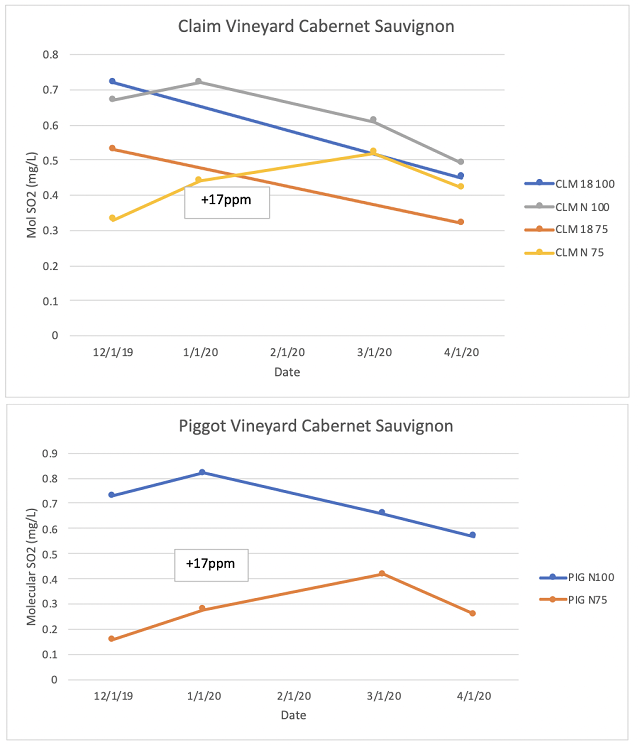
Table 2: Free and total SO2 (mg/L) for three pairs of Cabernet Sauvignon (in-house data, ICV labs)
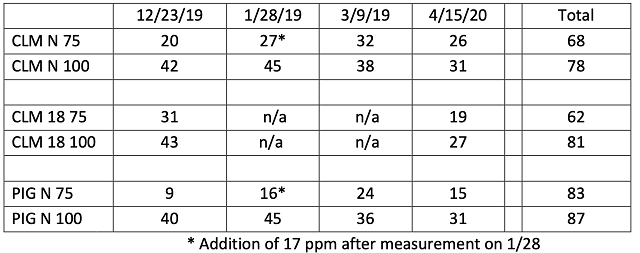
Table 3: Accumulation of volatile acidity (g/L) during aging for three pairs of Cabernet Sauvignon (ICV labs)
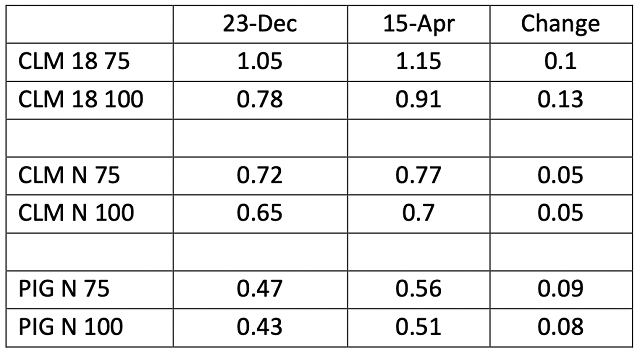
Figure 3: Color Intensity for three pairs of Cabernet Sauvignon (ICV Labs)
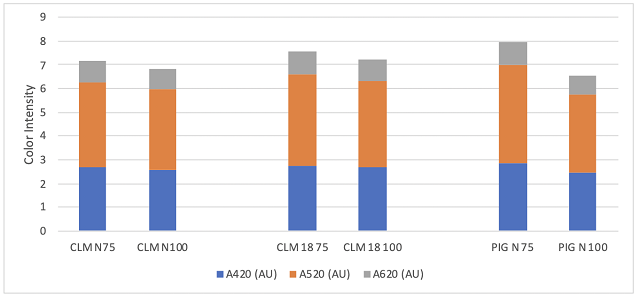
Table 4: Phenolic compounds (mg/L) in three pairs of Cabernet Sauvignon (ETS Labs)
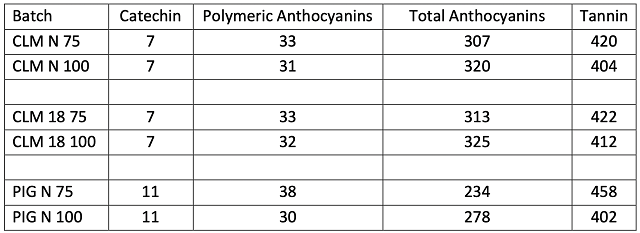
Figure 4: Mean scores for 5 descriptors from blind sensory analysis of Claim Vineyard Cabernet Sauvignon (neutral barrels).
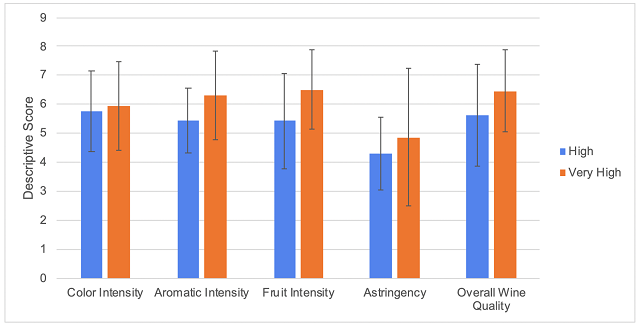
Table 5: Statistical analysis for descriptive scores from blind sensory analysis of Claim Vineyard Cabernet Sauvignon (neutral barrels).

References
(1) Ribereau-Gayon, P.; Dubourdieu, D.; Doneche, B.; Lonvaud, A. Handbook of Enology Volume 1: The Microbiology of Wine and Vinifications, 2nd ed.; John Wiley & Sons: West Sussex, England, 2006.
(2) Zoecklein, D. B. Sulfur Dioxide (SO2). Enology Notes Downloads, 16.
(3) Boulton, R.; Singleton, V. L.; Bisson, L. F.; Kunkee, R. E. Principles and Practices in Winemaking; Chapman and Hall, Inc: New York, 1996.
(4) Stamp, C. How Much SO2 to Add and When. Wines and Vines 2011.
(5) Rotter, B. Sulfur Dioxide. Improved Winemaking: advanced theory, practical solutions and opinions.
(6) Gomez-Plaza, E.; Gil, R.; Lopez-Roca, J.; Adrian, M. Effects of the Time of SO2 Addition on Phenolic Compounds in Wine. Vitis -Geilweilerhof- 2001, 40, 47–48.
(7) Picinelli, A.; Bakker, J.; Bridle, P. V. Model Wine Solutions: Effect of Sulphur Dioxide on Colour and Composition during Ageing. Vitis, 2015.
(8) Margalit, Y. Concepts in Wine Chemistry, 3rd ed.; The Wine Appreciation Guild LTD: San Francisco, California, 2012.
(9) Zoecklein, B. W. Sulfur Dioxide: Science behind This Antimicrobial, Antioxidant, Wine Additive. Practical Winery and Vineyard Journal 2009.
(10) Harmon, K. The Impact of the Timing and Amount of SO2 Addition on Cab Franc Chemistry, Structure and Sensory Characteristics (2018). Winemakers Research Exchange.
